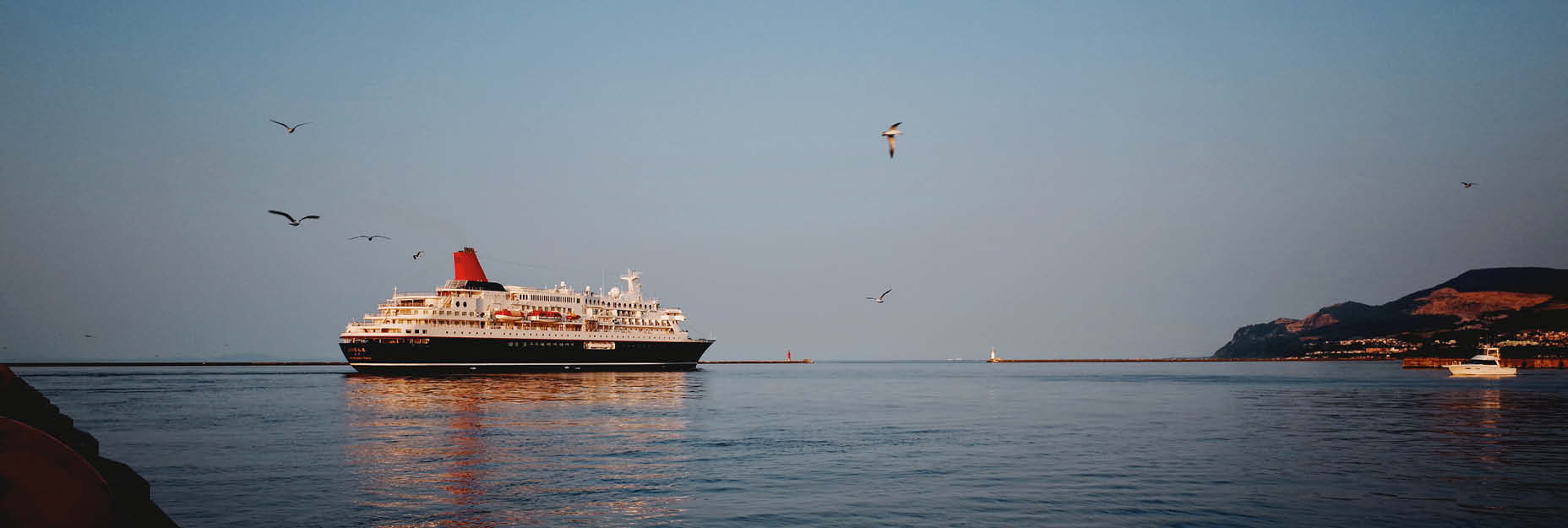The cruise industry and sustainability
In recent times, the cruise industry has experienced significant transformation within its operations and faces increasing demand to operate sustainably. This blog reveals the cruise industry trends to impact the industry in 2020. These include issues like over tourism, due to cruise industry growth and how new technology like AI and facial recognition has enhanced the customer experience on board. Finally, we touch on the new regulations relating to carbon emissions that are high on the agenda for many businesses in this sector.
Cruise industry growth and overtourism
Overtourism is not a particularly new concept to the hospitality world, due to significant growth over the past few years. However, recent news put the cruise industry at the centre of the world’s attention after a crash in Italy’s historical water-based city, Venice. This resulted in the Italian government calling for a ban on all large cruise ships from entering the city’s grand canal. This has instigated a larger global debate over restrictions on large fleets within small built-up areas. The UNESCO world heritage site in Croatia, Dubrovnik, and Amsterdam are among other cities who have since placed restrictions on cruise passengers.
In accordance with data from Cruise Market Watch, worldwide the ocean cruise industry has an annual passenger compound growth rate of 6.63%. Whilst demand is increasing, the importance of addressing this issue becomes more apparent. By 2018, the cruise industry market share was reported by Cruise Market Watch to be worth an estimated $45.6 billion, with a total of 13 new planned ships increasing cumulative revenue by an addition $11.7 billion to the ocean cruise industry by 2020.
Findings from WeForum found that key destinations have been found by Italian sociologist Marco d’Eramo to be unprepared to deal with the unprecedented rapid expansion of global tourism. It is with this that the tourism industry must be considered in its approach to overtourism.
One growth market with this issue in mind has been the trend of river cruising, with customers demanding greener and more personable approaches with a different pathway on the waters within top cities. The 2019 Cruise Industry News Annual Report estimated the industry’s total capacity at 27.7 million passengers for 2019, based on 100 percent double occupancy, and projects this growth to reach 40.5 million passengers by 2027. Sustainability and Wellness have been noted as the two key areas of opportunity, with concepts being developed onboard such as renting E-bikes, planting trees and banning plastic waste.
Changing demands for customer experience
Cruise ships have often welcomed the use of new technologies and apps. The changing demands for different experiences within hospitality means the cruise industry will continue to adopt technology to enhance the customer trip. From AI facial recognition for boarding, on-demand services in the cabins and even digital concierges - the opportunities from advancing technology means cruise companies must adapt to remain competitive.
These demands, however also extend to the needs of the ‘conscious-consumer’ and increasing knowledge available on how to act sustainably based on individual carbon footprint. More and more questions have emerged over how to cruise with a conscience, with added scrutiny on businesses to disclose information on their impact of each journey. For example, cruises are asked to explain their approach to waste management, their strategy for decreasing their carbon emissions, and how they can give back to the communities they operate in.
Cruise industry 2020
From January 2020, the International Maritime Organisation has set a limit for fuel oil used on board ships operating outside designated emission control areas to be reduced to 0.50% m/m (mass by mass). The purpose of this is to significantly reduce the amount of sulphur oxides leaving ships and aims to have major health and environmental benefits for the world, in particular for those habitants living close to ports and coasts.
These changing requirements for legislation have since increased demand in product development for zero-emission fleets, helping meet international targets. Due for 2022 delivery, Chantiers de l’Atlantique is poised to integrate the first LNG-powered fuel cell aboard a cruise ship, MSC Europa. This marks an important technological breakthrough toward zero-emission ships that will meet the ambition of the new European Commission to make Europe the first continent with a carbon-neutral impact.
In line with the 2020 Olympic Games in Tokyo, the Japanese NGO has also commissioned Spanish Naval architecture firm Oliver Design to build a new cruise liner, hailed as the ‘world’s most eco-friendly cruise ship’ with a hybrid engine, capable of being powered by diesel or LNG. This will save up to 20% in fuel consumption and reduce carbon emissions by up to 40%, compared to a similar ship with conventional technology. The eventual aim is to use this as a turning point for the shipping industry for raising awareness of the effects of climate change.
In addition, MSC Cruises has announced that it will offset all direct carbon dioxide emissions from its fleet operations through various projects from 1st January 2020, allowing it to become the first major carbon-neutral cruise operation in the world.
Taking action
As we move into 2020, the case for reducing carbon emissions and waste is clear, across all levels of macro and micro influences within the industry.
Every year, around one-third of all third produced in the world, is lost or wasted, costing the global economy over $1 trillion. Food that ends up in landfill emits methane, which is roughly 30 times more harmful than carbon dioxide as a greenhouse gas. As one of the largest sectors globally, the tourism industry must come together and take industry action to tackle this.
Winnow works with global clients across the cruise and tourism industry with notable customers like Costa Cruises and Viking Line and understand the importance of cutting food waste within this sector and the significant benefits that have been brought to light following the implementation of food waste reduction technology to enable them to do it.
Costa Cruises became the first cruise line to make a public food waste reduction target in 2018 via the launch of their ‘4GOODFOOD’ programme. This aims to reduce total food waste by 50% by 2020, which is supported by the Winnow system onboard their fleets.
Another example is Viking Line who joined forces with Winnow in April 2019. Their aim is to cut food waste on M/S Mariella and have reduced food waste by 40% during their pilot period alone (equal to approximately 70,000 meals in total). Based on the positive results, a similar project is in the planning for M/S Gabriella.
‘From Norway to Finland, we are very excited to work with a growing number of cruise ferry operators in the Nordic region. Alongside our other clients that have large scale buffet operations, we have seen that we are really able to make a big impact. By giving our cruise ferry customers access to actionable data, for example, their onboard buffet breakfast, they can quickly start taking the necessary steps in order to cut down their food waste’ Mattias Green, Business Development at Winnow, Nordics.
Find out how you can take the important step to cut food waste and help your carbon footprint here by speaking to one of our food waste experts.









Comment on my blog